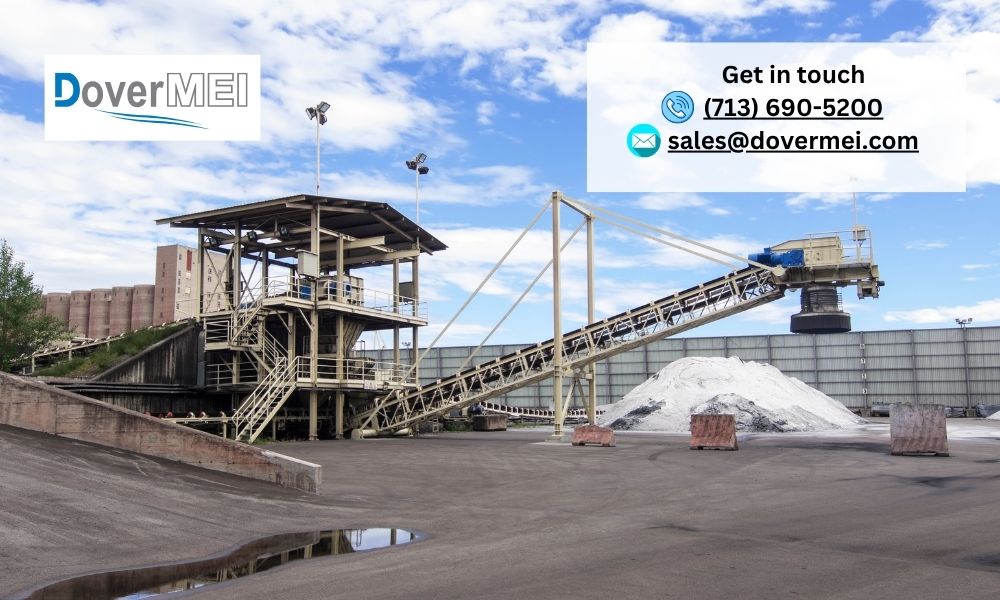In industrial operations that rely on bulk solids handling, ensuring consistent, predictable flow is not a luxury—it’s a necessity. Flowability, the ease with which a bulk material moves through processing equipment, plays a crucial role in the reliability, safety, and cost-efficiency of a facility’s operation. Poor flow characteristics can lead to blockages, rat-holing, segregation, equipment damage, and ultimately, costly unplanned downtime.
Understanding Flowability in Bulk Solids
Flowability refers to a material’s ability to move under the influence of gravity or mechanical force. This property is affected by a wide range of factors including particle size, shape, moisture content, surface texture, cohesiveness, and external vibrations.
Some materials like dry sand, sugar, or plastic pellets exhibit excellent flowability. Others, such as hydrated lime, flour, or titanium dioxide, are known for their poor flow behavior due to cohesive or adhesive tendencies.
Common Flow Issues in Bulk Material Handling
- Bridging (Arching): Formation of a stable arch of material over an outlet, blocking discharge.
- Ratholing: A flow channel forms in the center of the bin, leaving surrounding material stagnant.
- Segregation: Separation of particles by size or density, leading to inconsistent product quality.
- Flooding: Sudden, uncontrolled flow of aerated powders that overwhelm downstream processes.
These issues are often rooted in inadequate design, poor flow characterization, or improper storage and conveying systems.
Why Flowability Matters in Industrial Operations
Reduces Operational Downtime
Poor flow characteristics can bring production to a halt. Blocked hoppers, clogged feeders, and stalled conveyors require manual intervention, interrupting production schedules and driving up labor costs.
Improves Product Consistency
Unpredictable flow behavior can lead to inconsistent batch compositions, segregation, and metering errors. Proper flow ensures a homogeneous feed, especially critical in chemical blending, food production, and pharmaceutical manufacturing.
Enhances Safety
Handling sticky, cohesive, or explosive powders demands precise control over flow. Preventing sudden discharges or dust plumes reduces risks of combustion, inhalation hazards, and structural overloads.
Increases Equipment Longevity
When equipment is forced to work harder to dislodge stuck material—through vibration, hammering, or high torque—the result is accelerated wear and tear. Enhancing flowability reduces mechanical strain and extends component life.
Supports Automation and Control
Modern facilities rely on automated batching, conveying, and metering systems. These systems require predictable flow behavior to maintain accuracy and prevent system faults or shutdowns.
Key Factors That Affect Flowability
Particle Size and Distribution
Fine powders tend to be more cohesive and prone to compaction. Uniform particle sizes with lower fines content improve flow behavior. Wide particle size distributions can lead to segregation and inconsistent flow.
Moisture Content
Moisture acts as a binding agent. Excess water can cause clumping, while humidity can alter surface friction. Controlling ambient conditions is crucial for materials sensitive to water absorption.
Particle Shape and Surface Texture
Spherical or rounded particles flow better than angular or fibrous ones. Smooth surfaces reduce inter-particle friction, improving discharge characteristics.
Bulk Density and Consolidation Pressure
Materials with high bulk density or that compact under load resist flow due to interlocking or adhesion. Consolidation in tall silos can lead to arching or material collapse upon discharge.
Hopper and Bin Geometry
Incorrect silo or hopper angles result in funnel flow rather than mass flow, causing stagnation and bridging. The design of transitions, outlet size, wall angles, and surface coatings all play a role in promoting reliable flow.
Improving Flowability in Bulk Solids Handling
Material Testing and Flow Characterization
Using methods such as:
- Shear cell testing (e.g., Jenike Shear Tester)
- Angle of repose analysis
- Bulk density and compressibility measurement
These tests provide critical data to guide hopper design, conveyor selection, and storage requirements.
Optimized Equipment Design
- Use steep wall angles in hoppers to encourage mass flow.
- Implement flow aids such as air pads, vibrators, or mechanical agitators.
- Select coated or low-friction linings like UHMW-PE, Teflon, or stainless steel for sticky materials.
Use of Flow Aids and Conditioners
- Vibratory dischargers: Break up cohesive clumps.
- Fluidizing pads: Aerate powders to improve flow.
- Mechanical agitators: Especially useful for non-free-flowing powders.
- External bin activators: Reduce internal stresses that inhibit flow.
Environmental Control
Maintain stable humidity and temperature in storage areas. Install dehumidifiers or heaters in silos to manage moisture-sensitive materials. Use nitrogen blanketing for materials prone to oxidation or explosion.
Implement Segregation Control Measures
- Use of inserts in bins to create mass flow conditions.
- Minimize drop heights during filling to reduce air entrainment.
- Use multiple feed points to blend materials and prevent stratification.
Regular Maintenance and Monitoring
Build-up of material along walls and outlets restricts flow. Schedule regular:
- Cleaning cycles
- Inspection of flow aids
- Monitoring of pressure and vibration levels
to ensure optimal system performance.
Designing for Flow: The Role of Engineering
At the heart of reliable flow is intelligent system design. Engineers must integrate flow data into every aspect of material handling systems, including:
- Silo and hopper geometry
- Outlet size and shape
- Feeding and metering equipment
- Conveying speed and incline angles
Customized solutions tailored to the material’s flow properties dramatically reduce downtime and enhance operational resilience.
Industries That Rely on Improved Flowability
- Agriculture: Grain, feed, and fertilizer storage
- Food Processing: Flour, sugar, spices, additives
- Chemicals: Fine powders, pigments, catalysts
- Plastics: Pellets, regrind, and powdered resins
- Cement and Mining: Fly ash, cement, limestone
Each of these sectors demands reliable flow to meet production targets and avoid costly disruptions.
Optimize Flowability with DoverMEI
Flowability is not just a property—it’s a performance metric that defines the success of every bulk solids handling operation. Improving material flow reduces costs, enhances safety, and ensures process efficiency from start to finish.
At DoverMEI, we specialize in designing custom-engineered systems that improve material flow across industries. Whether you’re upgrading your current setup or building a new operation, our expert team delivers solutions that eliminate flow issues and boost productivity.

